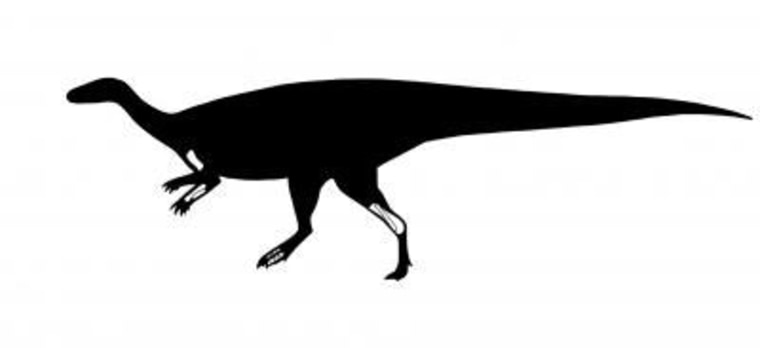A prospecting geologist stumbled upon a ragtag bunch of bones in the northern part of British Columbia, more than three decades ago. A new study suggests these fossils could represent a new species of dinosaur.
But beyond that, the dinosaur's identity is a mystery — sort of a Dino Doe.
The small collection of bones includes seven shin, arm and toe bones, as well as a possible skull fragment. Based on the shapes and sizes of the bones, paleontologists think they could have belonged to a type of small- to medium-sized , possibly a pachycephalosaur or ornithopod.
The specimen is referred to as the Sustut dinosaur, because it was found in the Sustut Basin in north-central British Columbia, Canada.
Kenny Larsen found the bones in 1971 while prospecting for thorium, a radioactive element. During his fieldwork, his instruments registered above-background levels of radiation, which turned out to be emitted by the bones. Larsen collected the loose bones from the rubble and held onto them until donating them to Dalhousie University in Halifax, Nova Scotia, in 2004.
The bones were studied by then-undergraduate student Victoria Arbour who soon realized the remains were a rare find: They are well-preserved and are the most complete dinosaur specimen found in British Columbia to date.
Larsen's original field notes were lost, so paleontologists don't know the exact location where the bones were found, making them harder to date. Based on properties of the rock attached to some of the fragments, Arbour and her colleagues think the specimen may date to about 70 million years ago in the Upper Cretaceous Period.
The bone fragments resemble those from a , plant-eating dinosaur, Arbour found. Certain bones are similar to those from pachycephalosaurs, which ran on two legs and sported thick, dome-shaped skulls, while others are similar to ornithopods, bipedal grazers with horny beaks.
"There are similarities with two other although there's also an arm bone we've never seen before," Arbour said. "The Sustut dinosaur may be a new species, but we won't know for sure until more fossils can be found."
The bone fragments could possibly be from more than one individual, or even more than one type of dinosaur, the study notes.
Arbour's findings are detailed in the most recent issue of the Canadian Journal of Earth Sciences. Her research was funded by the Natural Sciences and Engineering Research Council of Canada and Alberta Ingenuity.
The fossils are currently in the collection of the Royal British Columbia Museum in Victoria, British Columbia.
